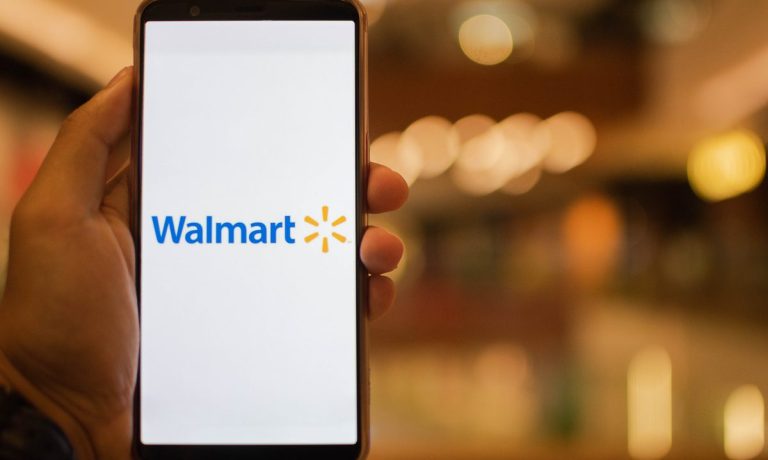AMZN vs WMT Weekly: With Q4 Results Out, Fight Over Food, Delivery, Digital Resumes

Last year, Q4 eCommerce sales at Walmart US grew 69%. This year, they rose just 1%. Although CEO Doug McMillon told investors Thursday (Feb 17) that Walmart was an “increasingly digital” omnichannel business, this stalled eCommerce sales progress in the face of myriad changes and billions of dollars invested throughout — and before — the pandemic, was underwhelming to say the least.
And yet, McMillon and the executive leadership team at Walmart said they’ve never been more optimistic about the business, its position within the current economic environment, and the new opportunities that are emerging, such as advertising, as a result of its changing ways.
While the latest eCommerce numbers may say one thing, Walmart management is fully onboard the omnichannel bus, with no stops intended and further investment planned to deepen the 77-year-old retail giant’s ongoing digital transformation.
“I’m really proud of the way the team has helped position us to serve customers any way they want to be served, whether that’s at home, in the refrigerator, at their front door, at the curb or in store,” Walmart U.S. CEO John Furner said.
In fact, the “new” Walmart — with its 10,500 superstore locations worldwide — is viewed as a hybrid enterprise, where physical stores double as fulfillment centers to serve customers quickly, conveniently and cheaply.
“Having inventory so close to so many customers is a competitive advantage. In some cases, we’re getting items to customers in hours rather than days,” McMillon said on the company’s Q4 webcast. “The business model is changing. I think that’s the headline. We’ve got a business that is becoming increasingly digital,” he told analysts.
To that point, Walmart plans to grow its nascent $2 Billion ad business into a “top-10 player” in the next few years, push its online SKU count to 200 million items by the end of 2022, and expand its new Walmart Go Local community delivery service from 1,000 to 5,000 points in the next 12 months.
The Grocery Gambit
All of this is happening while Walmart is continuing to tighten its grip on groceries where it already stands as the nation’s largest seller of food, beverages and other consumable household items.
At a time when headline inflation is running at 7.5% and many consumer categories are seeing price increases of two or three times as much, Walmart said it was a good time to be the “low price leader” and meet the increasingly cost-conscious needs of shoppers.
“At a time when prices are rising in so many parts of the economy, being able to offer customer value and fight inflation is what we do. It’s what our merchants do, and that will continue,” Furner said.
Taken together, Walmart recent grocery gains will only make it harder for Amazon to grow its share of the food and beverage category where it has remained just below 2% since 2018, versus its rival’s steady 19% share, PYMNTS data shows.
Amazon vs Visa
While Wall Street was digesting Walmart’s earnings, Amazon had its own blockbuster news announcement Thursday (Feb. 17), via a global agreement to accept Visa cards at all Amazon.com stores and sites.
The retail giant said it will not turn off the credit cards from its U.K. websites, while customers in Australia and Singapore will no longer pay a surcharge fee.
“We’ve recently reached a global agreement with Visa that allows all customers to continue using their Visa credit cards in our stores,” according to an Amazon spokesperson, per reports.
The agreement includes a joint commitment to collaborate on new product and technology initiatives to ensure innovative payment experiences, Visa said to Reuters.
Regulators in Britain were looking into the card fee increases after the country’s payments regulator found no evidence to justify the rises, Reuters reported.
The situation with Visa and Amazon in the U.K. served as a catalyst, with some of the biggest retailers in the world collaborating with the Merchants Payments Coalition and sending a letter last month to the Federal Trade Commission (FTC) and the Department of Justice (DOJ) asking that those regulators investigate credit card fees.
Love Thy Neighbor
Amazon recently unveiled its newest distribution facility this week, a move that is normally a non-event since it operates more than 110 of them across the U.S. and is adding space all the time.
The difference this time, however, is that its new location in Lowell, Ark. sits only about 12 miles away from Walmart’s corporate headquarters in Bentonville.
The 60,000 square-foot center will handle last-mile orders, which means it will be the last stop before a package is delivered to a customer.
“We look forward to becoming part of the fabric of the local community and are thrilled to be able to expand our operations in Northwest Arkansas,” said Jessica Breaux, manager of economic development at Amazon, in a statement. “We’re grateful for the strong support we’ve received from the community and the local and state leaders who have made our growth in Arkansas possible.”
This is the state’s second last-mile facility, with the first located in the Little Rock area.
Walmart did not comment on the arrival of its new neighbor.